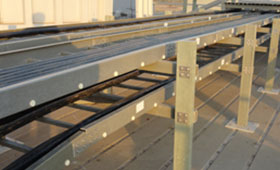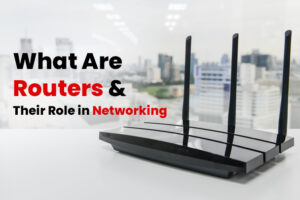
In the world of cable management systems, the terms FRP and GRP are often used interchangeably. They are similar in meaning but different by name according to different countries. Although both FRP and GRP cable trays are great for organizing and protecting cables, there are some minor differences that can affect their suitability for specific applications. To assist you in selecting and buying the best FRP GRP cable Trays for your needs, we will explore the differences between FRP and GRP cable trays in this blog post.
But before knowing the differences, first, you should know the meaning of these cable trays.
What are FRP cable trays?
The composite material used to create FRP (Fiberglass Reinforced Plastic) cable trays is constructed of a thermosetting plastic resin and fiberglass reinforcement. The fiberglass, which gives the material strength and stiffness, is the main ingredient in its construction. The epoxy or polyester plastic resin that holds the fiberglass fibers together protects them from UV rays and environmental elements like rust.
What are GRP cable trays?
In terms of composition, GRP (Glass Reinforced Plastic) cable trays are very similar to FRP cable trays. They also include a composite made of plastic and fiberglass. Regional terminology serves as the main point of distinction between the two. These cable trays are more frequently referred to as GRP in some regions of the world, particularly in Europe. However, the components and characteristics are almost exact replicas of FRP cable trays.
Difference between FRP and GRP cable trays
Here are some of the points described where you can get the difference between Fiberglass cable trays and glass-reinforced cable trays:
1. Strength and Rigidity
Due to the fiberglass reinforcing, both FRP and GRP cable trays are incredibly strong and robust. Due to their strength, they can sustain cables across large distances and in difficult conditions. The cables are kept well-supported and structured because they are resistant to bending, warping, and sagging.
2. Corrosion Resistance
The corrosion resistance of both FRP and GRP cable trays is one of its most notable benefits. In locations where exposure to moisture or corrosive substances is a problem, the fiberglass reinforcement and the plastic resin serve as a natural barrier against rust and corrosion. The cable tray will be useful and physically good for a long time thanks to this corrosion resistance.
3. Chemical Resistance
The exceptional chemical resistance of FRP and GRP cable trays makes them appropriate for use in industries where exposure to corrosive substances is widespread. They can tolerate the impacts of different acids, alkalis, and chemicals without losing structural integrity or degrading. institutions like chemical plants, research institutions, and wastewater treatment plants all depend on this feature.
4. Fire Resistance
Cable trays made of FRP and GRP both have excellent fire-resistant qualities. They increase the safety of people and equipment by decreasing the likelihood that they may help a fire spread. Although they are not completely fireproof, their fire resistance can help put out flames and prevent damage to nearby structures and lines.
5. Electrical Insulation
The electrical insulating qualities of FRP or GRP cable trays are one of their benefits. These materials are superior electrical insulators, which lower the possibility of electrical interference and guarantee the security of personnel and machinery. When electromagnetic interference (EMI) or radiofrequency interference (RFI) must be kept to a minimum, this property is extremely advantageous.
6. Customization and Versatility
Both FRP and GRP cable trays are incredibly adaptable and may be tailored to fit certain project needs. They are easily produced, cut, and bent to meet specific cable routing requirements. Due to this adaptability, engineers and contractors may create cable management systems that are specifically suited to the facility’s needs and layout, maximizing cable organization and space efficiency.
7. Weight and Installation
Cable trays made of FRP and GRP are much lighter than those made of metal. This minimal weight makes installation easier, which lowers labor expenses and shortens installation time. When working in limited or elevated situations, the lighter weight of FRP and GRP cable trays makes them easier to handle and move.
8. Maintenance
Compared to metal counterparts, FRP and GRP cable trays require less maintenance. They don’t rust or corrode, thus no expensive or time-consuming rust prevention methods are required. Simple frequent washing with water and mild detergent will suffice to maintain the cable tray operating at peak efficiency without the need for intensive maintenance.
9. Environmental Sustainability
FRP and GRP cable trays provide environmentally favorable options as sustainability considerations in industrial applications become more crucial. At the conclusion of their life cycle, they too can be recycled because they were made with recyclable components. Furthermore, by lowering the manufacture and disposal of replacement cable trays, their lengthy service life lessens the total environmental impact.
10. Cost-Effectiveness Over Time
Although the initial cost of FRP or GRP cable trays may be slightly greater than that of more conventional materials like steel, there are significant long-term cost benefits. Over the lifetime of the cable tray system, reduced maintenance, increased longevity, and lower installation costs result in significant savings.
11. Compliance with Standards
In order to adhere to industry norms and regulations, quality FRP and GRP cable trays are designed and produced. Engineers, contractors, and facility owners may rest easy knowing that they will comply with all safety and performance criteria.
Conclusion
In conclusion, although the FRP and GRP cable trays have different looks, they are the same with different nomenclature. The best cable management systems are those that offer sturdiness, environmental sustainability, corrosion resistance, chemical resistance, fire resistance, and electrical insulation. Furthering their appeal are their lightweight, customization possibilities, and low maintenance needs. When choosing between the two, it’s important to take into account regional industry norms and terminology while making sure the chosen product satisfies the precise specifications of your project. In the end, these cable trays—whether you refer to them as FRP or GRP—are a wise choice for reliable and effective cable management.
click here to read more articles

